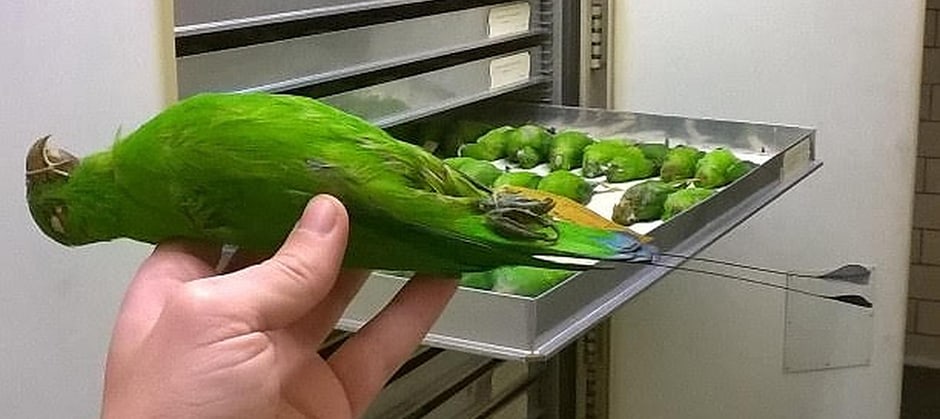Share this article
Less biodiversity means more bird extinction
Conservationists often focus on protecting individual species to help maintain biodiversity. But researchers found that protecting biodiversity may be a good way to prevent extinction.
Brian Weeks, an assistant professor in the School for Environment and Sustainability at the University of Michigan, wanted to see if birds in more diverse ecosystems were at less risk of extinction.
Biodiversity has a number of benefits, said Weeks, who led the study published in Ecology Letters. More diverse ecosystems tend to have fewer invasive species, less disease and are more productive—all of which can protect species, especially those barely holding on.
Weeks started his research as a PhD student looking at diversity and extinction risk on the Solomon Islands, a group of 900 small islands in the South Pacific. For his latest research, he turned to museums. He and his team used natural history museum specimens covering over 99% of all bird species in the world. They compared ecosystem diversity in the places where the specimens came from with the birds’ status on the International Union for Conservation of Nature’s Red List of at-risk species.
The researchers measured ecosystem diversity in these specimens in a number of ways. Using museum specimens, they measured biodiversity by looking at different traits of bird species indicating what they would do in the ecosystem. “Birds with long, curved bills likely interact with flowers,” he said. “Short, stubby bills may mean they rip apart flesh and are probably a carnivore. A diversity of traits in the system are one metric or dimension of diversity.” They then combined this dataset with existing data on the evolutionary history of birds and their to generate comprehensive estimates of bird diversity around the globe.
When they looked into extinction, they found a strong connection between high biodiversity and less extinction risk in bird species. This can be an important point to think about when conducting conservation activities, Weeks said. “We tend to think of diversity as the target of conservation,” he said. “But diversity can also aid us in our conservation efforts. Rather than focusing on individual species, we lose a lot doing that rather than protecting diversity of systems.”
A focus on place-based conservation—protecting ecosystems and landscapes—could help a range of species, he said. “The U.S. tends to focus on particular species. We have legal frameworks to protect individual species like the Endangered Species Act,” Weeks said. “Other places in the world have set up landscape level conservation interventions. They protect diversity as a whole in order to protect the species we care about.”
This is clear in the Solomon Islands, Weeks said, where human-dominated areas have more invasive species like rats and cats, but more remote areas without human influence have more endemic species.
Weeks pointed out the importance of museum specimens in learning more about the natural world. “A lot of what we know about the natural world and the responses of the natural world to human disturbance is based on museums,” he said. “They are the unsung heroes of biodiversity science.”
Header Image:
Weeks used museum specimens to determine how bird extinction risk and biodiversity is connected.
Credit: Brian Weeks








